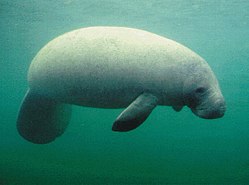
In early NZ, Maori hunted seals and sea lions for food, their skins and fur. NZ sea lions were fully protected 130 years ago which suggests that they were endangered then.

Three quarters of pups are born on the Auckland Islands. They are starting to breed more on the mainland. There is concern about the state of the population on the Auckland Islands as the number of pups being born has declined over the last 10 - 12 years which suggests they are dying.
They start breeding at about 4 years old. They only have 9 breeding females at present. They are weaned from their mothers at about 10 months old.
The sea lions are tagged so that they can monitor how old they are and where they go. They have a different colour for each year.
Estimated total around the Otago Coastline (Allens Beach, Pilots Beach, Sandfly Bay, Aramoana, the Catlins) is about 130 - 150. This year there were 5 pups (3 females) born around Otago ( including one in Aramoana.
Sea lions have been found in strange places - Camp ground toilet, by the road, inn a garden, and on a farm.
They like to interact and are very social animals. If confronted don't look them in the eye. Be boring and keep calm as they just come to investigate you. They are just like a dog, they will run up to you and after you if you run. just back off and get out of their space they will move on after 5 or so minutes.
Don't get in between a fur seal and the water because they will get scared and try and head towards the water.
Call DOC if :
- People are persisting in harassing a sea lion
- The sea lion is clearly injured or tangled
- There is a mother and a new born pup
- If you have information about someone harming a pup
New Zealand Sea Lion
From Wikipedia, the free encyclopedia
| New Zealand Sea Lion | ||||||||||||||||||
|---|---|---|---|---|---|---|---|---|---|---|---|---|---|---|---|---|---|---|
 New Zealand (Hooker's) Sea Lion | ||||||||||||||||||
| Conservation status | ||||||||||||||||||
| Scientific classification | ||||||||||||||||||
| ||||||||||||||||||
| Binomial name | ||||||||||||||||||
| Phocarctos hookeri (Gray, 1844) |

The New Zealand Sea Lion or Hooker's Sea Lion (Phocarctos hookeri) is a species of sea lion that breeds around the coast of New Zealand's South Island and Stewart Island/Rakiura to some extent, and to a greater extent around New Zealand's sub-antarctic islands, especially the Auckland Islands. As one of the larger New Zealand animals, it has been a protected species since the 1890s.











